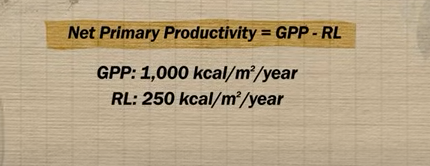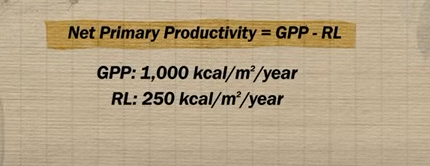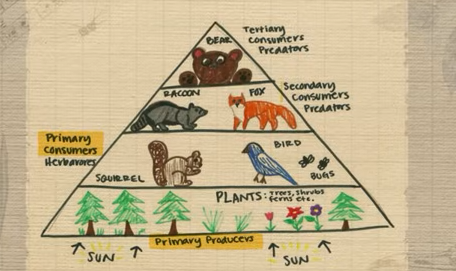Apes exam studying
1/34
There's no tags or description
Looks like no tags are added yet.
Name | Mastery | Learn | Test | Matching | Spaced |
|---|
No study sessions yet.
35 Terms
Unit 1:
Biotic
Referring to living components of an ecosystem, such as plants and animals, that interact with one another and their environment. Or Biotic factors are living things within an ecosystem
Unit 1:
Abiotic
Referring to non-living components of an ecosystem, such as water, sunlight, and minerals, that influence the living organisms. Or non-living components; such as water, soil and atmosphere.
Unit 1:
Symbiosis
THIS IS NOT THE SAME AS MUTUALISM!!
Refers to any organsism that live in close proximity to each other.
Unit 1:
Mutualism
A type of symbiotic relationship in which both organisms benefit from their interaction.
Examples:
Bees and Plants that they pollinate
A coral reef is made up of photosynthetic algae, which provide nutrients and protection.
Unit 1:
Biome
A region on Earth that shares a consistent yearly average temperature and precipitation pattern.
or
A biome is characterized by distinct flora and fauna adapted to the specific climate and environmental conditions.
If the temperature or annual precipitation patterns change, our biomes’ locations can shift with those changes.
Example: The rainforest and tundra are two examples of very different biomes One of them are going to have both high and annual average temperature and precipitation, and the other is going to have very low annual temperature and precipitation..
Unit 1:
Law of conservation of Matter
Matter is never created or destroyed it can only change forms.
Unit 1:
Biochemical Cycle Terminology
Reservoirs
Things that temporarily store matter.
Storage locations for nutrients in the ecosystem, such as the atmosphere, oceans, or soil, where elements like carbon and nitrogen reside before being utilized in various biochemical processes.
Unit 1:
Biochemical Cycle Terminology
Sources
Processes that move matter around between reservoirs
Natural processes or activities that release matter or nutrients into an ecosystem, such as photosynthesis or decomposition.
Unit 1:
Biochemical Cycle Terminology
Sinks
Reservoirs that store more matter than they give off
Natural systems that absorb and store nutrients and matter, helping to balance the flow of elements within ecosystems.
Unit 1: 1.4 Carbon Cycle
Carbon Cycle key points
Carbon sources return carbon to the atmosphere while sinks remove carbon from the atmosphere
The amount of time carbon spends in different reservoirs significantly varies.
The series of processes by which carbon is exchanged among the atmosphere, land, water, and living organisms plays a crucial role in regulating Earth's climate and supporting life.
Unit 1:
Photosynthesis
Removes carbon from the atmoshpere and stores it in plant life.
Unit 1:
Respiration
Releases carbon back into the atmosphere as plants and animals break down glucose of energy.
Unit 1:
Extraction and Combustion
Processes that release carbon from fossil fuels into the atmosphere, contributing to climate change. Extraction involves removing carbon-rich resources from the Earth, while combustion refers to burning these resources for energy.
Unit 1: 1.5 The Nitrogen Cycle
Nitrogen Cycle Key Points
Nitrogen cycles more quickly through reservoirs than in the carbon cycle.
The major nitrogen reservoir is in the atmosphere
Exist in a form that’s biologically beneficial to plants or animals.
Involves processes like nitrogen fixation, nitrification, denitrification, and ammonification, which recycle nitrogen in ecosystems.
Unit 1: 1.5 The Nitrogen Cycle
Nitrogen Fixation
Converts biologically unavailable nitrogen gas (N2) into a biologically available form like ammonia (NH3) or related compounds, making it accessible for use by living organisms.
Nitrogen can also be fixed by lightning and industrial processes like fossil combustion convert N2 into nitrate (NO3 )
Unit 1: 1.5 The Nitrogen Cycle
Rhizobacteria
Symbiotic bateria living in root noodules of plants and fixing nitrogen for them.
Unit 1: 1.5 The Nitrogen Cycle
Assimlation
Plants or animals take in nitrogen and convert it into body tissue
is the process by which plants and animals incorporate the fixed nitrogen from the environment into their biological tissues, primarily in the form of amino acids and proteins.
Unit 1: 1.6 The Phosphours Cycle
No gas phase, doesn’t enter the atmosphere, making it slower than other cycles.
The natural process involving the movement of phosphorus through the lithosphere, hydrosphere, and biosphere, essential for DNA, RNA, and ATP synthesis in living organisms.
Unit 1: 1.6 The Phosphours Cycle
Major Phosphous reservoirs are rocks and sediments.
These reservoirs release phosphorus through weathering, which then enters the soil and water systems.
Weathering is the breaking down of rocks by wind and rain.
Unit 1: 1.6 The Phosphours Cycle
Phosphorus is often the limiting factor of plant growth.
Unit 1: 1.7 The Hydrologic (Water) Cycle
The movement of water driven by the suns energy. This process gets it energy from the sun.
The continuous movement of water through evaporation, condensation, precipitation, and infiltration. This cycle is crucial for sustaining ecosystems and regulating climate.
Unit 1: 1.7 The Hydrologic (Water) Cycle
Infiltration
Water seeping through the soild and recharging around water reservoirs.
is the process by which water enters the soil from the surface, allowing it to replenish groundwater supplies and maintain ecosystem health.
Unit 1: 1.7 The Hydrologic (Water) Cycle
Transpiration
Water evaporates from the leaves of plants.
is the process by which water is absorbed by plant roots and then released as water vapor from leaves into the atmosphere, playing a key role in the water cycle and contributing to atmospheric moisture.
Unit 1: 1.8 Primary Productivity
Primary productivity = Energy/Area/Time
The rate at which energy is converted by photosynthetic and chemosynthetic autotrophs to organic substances.
Unit 1: 1.8 Primary Productivity
Respiration Loss (RL)
The energy plants use up for their own cellular respiration.
Is the energy lost by organisms during metabolic processes that convert organic matter back into energy, reducing the overall energy available for primary productivity.This loss impacts the efficiency of energy transfer in ecosystems.
Unit 1: 1.8 Primary Productivity
Gross Primary Productivity
GPP is the total amount of energy that plants produce.
(GPP) It is the total amount of energy captured by photosynthesis in a given area over a specific time period before any losses due to respiration. It represents the total biomass produced by autotrophs.
Unit 1: 1.8 Primary Productivity
Net Primary Productivity
NPP is the amount of energy that plants can produce after respiration losses.
(NPP)It is the amount of energy available for growth and reproduction after accounting for respiration losses. It is calculated by subtracting respiration loss from gross primary productivity.
Unit 1: 1.8 Primary Productivity
Caculate GPP and NPP or Respiration loss for given ecosystem
NPP = GPP - RL
is the process of determining the total energy produced and available for consumption in an ecosystem by analyzing primary productivity metrics.

Unit 1: 1.8 Primary Productivity
Practice problem

1000 kcal/m2/ year - 250 kacal/m2/year = 750 kcals/m2/year
Unit 1: 1.9- 1.10 Trophic Levels/ Energy Flow And The 10% Rule
Trophic Pyramid - shows how much energy flow through different levels in a food chain.
The hierarchical levels in an ecosystem represent the flow of energy and nutrients from primary producers to various levels of consumers. The 10% Rule states that only about 10% of the energy at one trophic level is transferred to the next level, with the rest lost as heat or used for metabolism.
Unit 1: 1.9- 1.10 Trophic Levels/ Energy Flow And The 10% Rule

Producers/Plants are at the base of the pyramid because they have access to the largest amount of energy. Producing energy directly from the sun, they’re not getting that energy from another organism.
The reason the pyramid gets narrower as we move up is that each level receives 10 percent of the energy from the level below, that’s because the organisms at the level below use up a ton of energy for cellur respiration.

Unit 1: 1.9- 1.10 Trophic Levels/ Energy Flow And The 10% Rule
Second law of Thermodyanmics
Some energy is lost as heat each time energy is transferred.
States that energy transfer is inefficient and that energy tends to disperse, leading to decreased availability at higher trophic levels in ecosystems.
Unit 1: 1.9- 1.10 Trophic Levels/ Energy Flow And The 10% Rule
10% Rule
Only 10% of energy from one trophic level is passes to the next trophic level.
Unit 1.11 Food Webs And Food Chains
Arrows in a food web or a food chain show the movement of both energy and matter.
Unit 1.11 Food Webs And Food Chains
Trophic Cascades
Top preadators control herbiovores population leading to larger primary producers population. This ecological phenomenon occurs when the removal or addition of top predators results in a cascade of effects throughout the food web, ultimately impacting the abundance and diversity of species at various trophic levels.